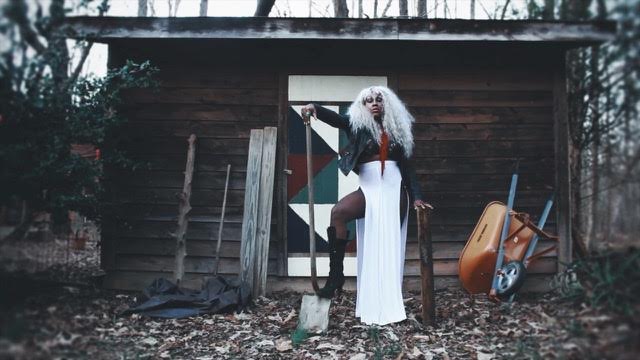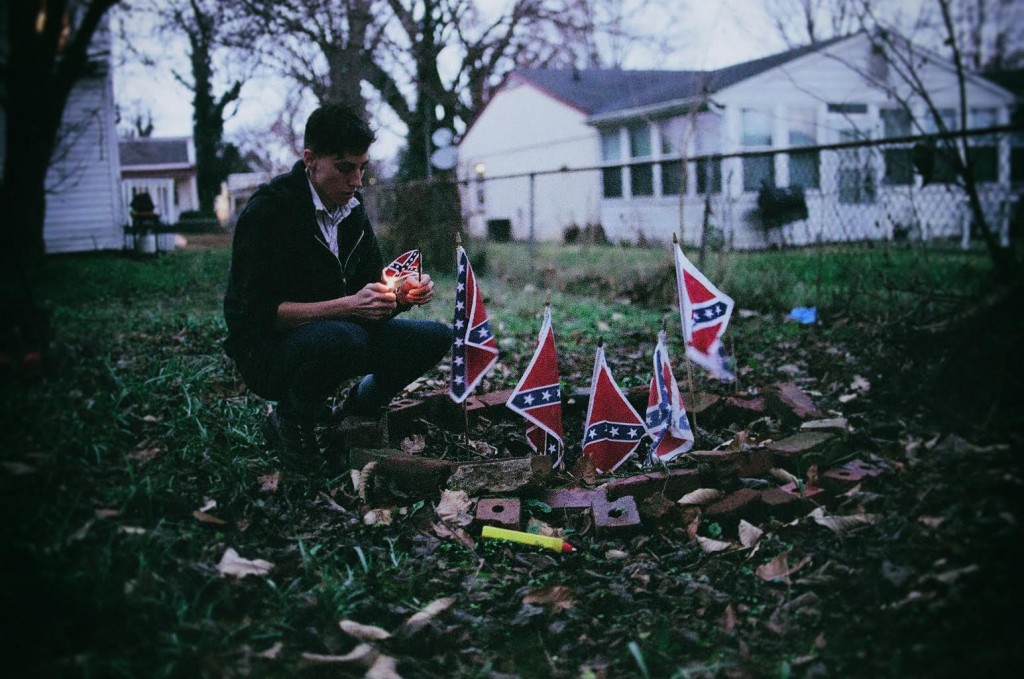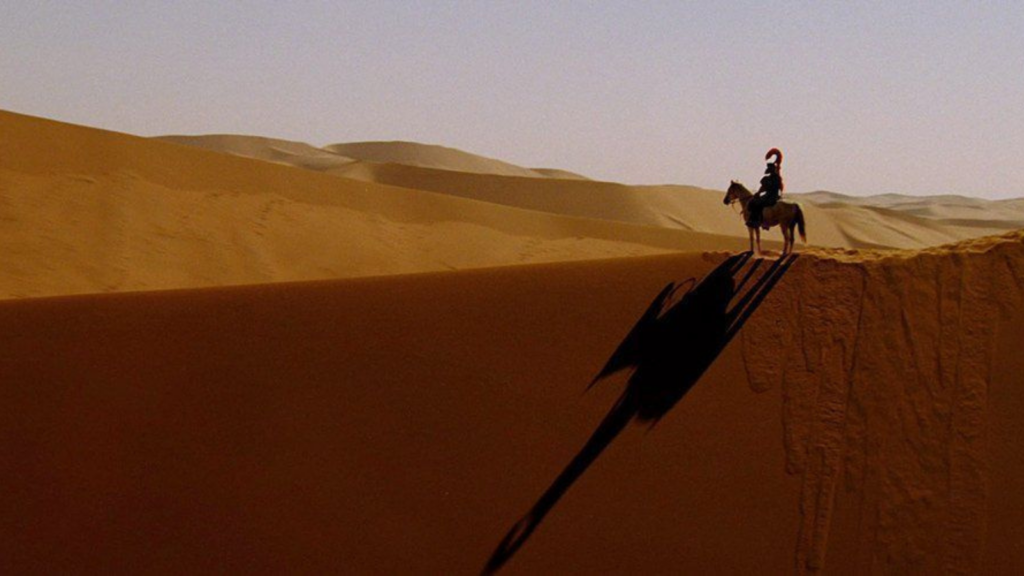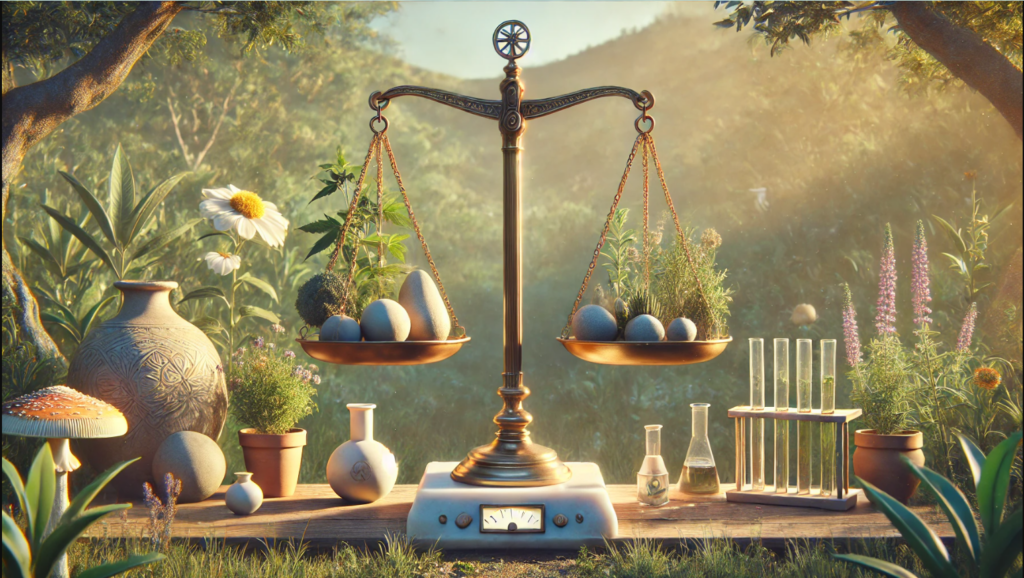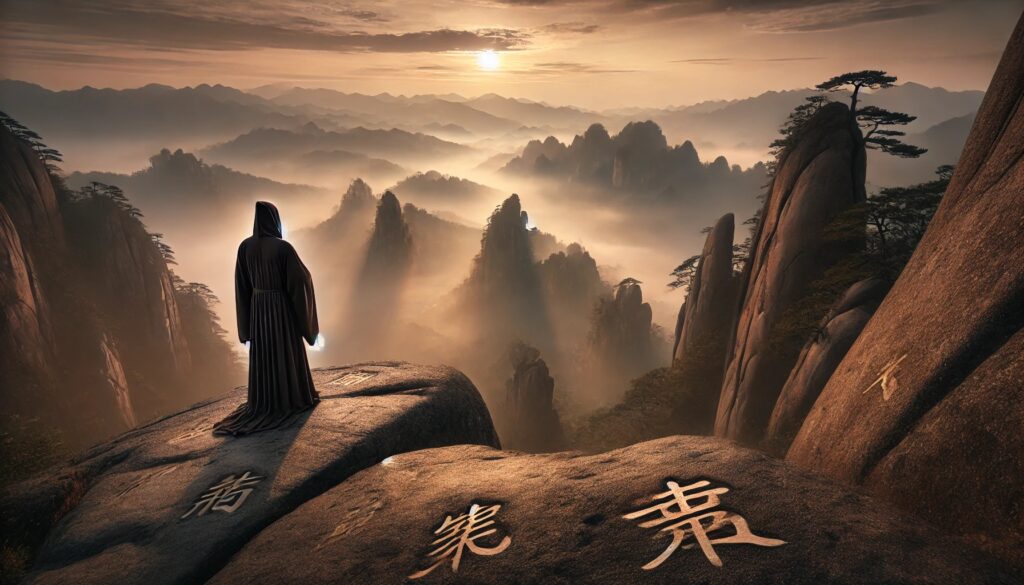Filmmaker photographer poet Xander Stewart creates art with friends in what up until now has been a fairly private way. My interview with Mamone about Queer Appalachia, published here on Reality Sandwich, brought Xander‘s Electric Dirt Zine film short to the attention of the programmer of Outfest 2017’s Platinum Shorts Showcase. Xander will be traveling to Los Angeles soon, not only as a filmmaker screening at Platinum Shorts but also for a group photography exhibit at Lethal Amounts, the prestigious DTLA art gallery.
While progressives bemoan the evangelical south, perplexed by the puzzle of just how to spark a renaissance among the reactionary, the answer seems obvious. Empower the culture of queer people, of people of color, and other marginalized southerners, whose life experiences and talents can transform their world, and ours. I’m sorry my Yankee friends, but it’s just not our job. Our job is to appreciate and support the art produced by southerners who have survived in such a harsh social climate. I’m proud to be interviewing one such southern orchid: Xander Stewart.
What makes analog film and video your preferred medium?
When I first started shooting analog film, I was in high school and borrowed an old film camera that had belonged to my dad. I was immediately enraptured with the softness of the images. They felt closer to how I saw the world and captured moments in a way that felt more honest. They were blurry, filled with light leaks, and poetic. In a way, analog film has a feeling of magical realism to it– half reality, half otherworldly. I haven’t stopped shooting since.
I came to video because it offered me a way to encapsulate even more thoroughly than film photography. The ability to capture transitions, sound and movements appealed to me. Once I started editing my own footage, I fell in love with videography. Again, it felt like creating a sort of magical realism, part documentation of the concrete world around me and part imaginative and subversive interpretation of it, if that makes any sense. I have a fixation with time and the ways we can manipulate it in video editing. Whether through slow motion, fast motion, jump cuts, it gives me a chance to depict how time moves so differently for me in different situations. In other ways, it can be used to make something feel very distorted, or dreamy, depending.
Tell us about flame, dirt, rust and silk
When I went to set up my online portfolio, I didn’t know how to organize it. I didn’t want to use subsections like landscapes, portraits, or commercial work, because that isn’t how I group my work in my head. I see my work, and maybe the world, through textures, even just conceptual textures. It feels like my work makes more sense with these generalized concepts pulling them together. Flame, dirt, rust, and silk all make up the core elements of my experience in the South. While there are nuances and a lot of blurred lines in terms of what falls where, I can place most things into those four categories.
To me, flame is resistance, passion, recklessness. Dirt is working with the earth, the ground, finding your roots, uprooting, rerooting, coming home. Rust is about time and, in some way, timelessness. It is the acknowledgment of our histories and aging, what we will leave behind and silk is the fragile, soft, sweet caress of the South that knows no gender but smells of gardenia and magnolia, and sustains the rest of it.
How does your community influence your art?
I’ve been told that I am not good at conceptual art, that my strength lies in documenting my own life. Most of the work I’ve shown, or feel attached to, consists of the more intimate, vulnerable photos I’ve taken of the people around me, be it friends, lovers, or exes (which means I am constantly setting myself up to have to contact past partners for permission to use old photos.)
It also means I have, over the years, acquired a kind of archive of all the friend groups I’ve transitioned between due to differences, distances, or simply slowly growing apart. Queer community can sometimes feel like more of a theory than a reality. I consider myself a part of a queer community and yet there are weeks, even months, where I feel very isolated. But I can look back at every person in my past work and remember how we each helped one another navigate the different rough patches of our lives. If you took all the queer people out of my work there would be nothing left but some mediocre landscapes, and pet portraits. My community, however permanent or impermanent, doesn’t just influence my art, it is my art. In some way, through that, it feels like my community lives on and the documentation of such creates a sense of sustained support.
Please tell us about Queer Appalachia, how it formed and what its goals are.
I feel like I’m not the most qualified person to tell the origin story of Queer Appalachia but, in a recent interview with Reality Sandwich, Mamone provides a lot of insight into the project and its goals and history. I came to the project to create a fundraising video for the Electric Dirt Zine, which is how this whole journey began. On a surface level, the video was created to help raise enough money to cover printing the zine and make donations to Queer/Trans/Black/Indigenous/P
Your short film Electric Dirt is about to screen at Outfest’s Platinum Shorts Showcase and your photography will be featured at Lethal Amounts Gallery. You’re coming to Los Angeles for the first time, to be part of one of the largest best known and established LGBTQ Film Festivals. How are you viewing that journey?
In all honesty— I’m low key terrified and also still trying to process that any of this is happening. I’m also trying to prepare myself for what I am expecting to be a different pace than what I’m used to. I work on a farm, though we are expected to work quickly, there is a comforting tedium to the work I do which I am not expecting to find in LA. I am excited to feel both intimidated and inspired by the work I am about to experience and the people who make it. I also find myself facing lots of hard questions. Like, how will I find dress pants? is camo cool in LA? am I too tender? should I download Tinder? In all seriousness, I’m really looking forward to having an experience unlike anything I’ve had on the east coast, but also looking forward to coming home.
The natural beauty of the South captivates your lens. Some might ask how do you stay in the South, and why?
I love the South. Even if I left, which I guess is always a possibility, I know it will always be home. In ways similar to people saying they were going to move to Canada when Trump was elected, I see leaving the South in this moment as an abuse of privilege, as abandoning those who don’t have the option of leaving. I feel a strong sense of responsibility and obligation, as a white person, to being accountable to the history of this region. I love front porches, fireflies, sumac berry lemonade. I love working with the earth, nurturing and being nurtured by the rich soil beneath us. The South has its history, and present, of racism, islamophobia, transphobia, homophobia, fervent evangelicalism but those things exist everywhere. I have no interest in perpetuating the stereotype that Southerners are backwards or that the South is more dangerous than other places. I am home, I want to make this home a safe place for everyone in it, just as people do in the Midwest, in the North, or on the West Coast. I’m committed to doing so and documenting all the strange, raw, and beautiful pieces of this place.
Tell us about Revival an event where creative queers, survivors of evangelical childhoods, can join together in “confessions, sermons, prayers, curses, and parables.” What has been the response to that call? How will you document it?
The show Revival, a work in progress curated by myself and the brilliant Ayden Love, will feature the work of several queer southern artists with fundamentalist christian upbringings. We will curate the exhibit and include our own work as we join together with others as queer creators to weave these histories of violence into a narrative of beauty and survival. We chose the title REVIVAL as a reference to the fervent tent meetings we attended in our youth and as an act of reclamation. We find power in using the language of our past to manifest our current desires, not unlike how “queer” has been reclaimed in recent years. The exhibit will act as our own revival, and attempt at bear witness to where we have been and who we once were. The works of art will serve as confessions, prayers, and parables. Dedicated to the damned, the cursed, and the incurable, REVIVAL explores the the many nuances of being queer and unholy in the South.
Every single application I received for the show brought me to tears. I am struck by the differences more than the similarities of the experiences of contributors to the show. I am genuinely astounded at our ability to survive ad leave behind such abuse. I am comforted by the fact that I am not alone in the ways I carry my upbringing around with me, that, everyday, others secretly or accidentally pray, still have nightmares of Hell, still get hymnals stuck in their heads, still want to have sex on a pulpit, still say “I am sorry” too often, are still sorry. I think, it’s a very specific portion of the queer community I didn’t realize how much I needed to connect to until I dated someone who was also a sinner, and was able to, for the first time, articulate all the unspoken ways it impacts my relationship to queerness, intimacy, sex, and gender.
The date for the show is still unknown, there is still so much to plan. If you’re interested in submitting, email queerrevivalproject@gmail.com for more information.
How dangerous is it to grow up Queer in the rural south? What does the prospect of becoming better known as a film maker mean to you?
I think its important to be transparent about my privilege as a white person in the South who grew up middle class. While some places aren’t as inviting as others even to me, when it comes to the existence of violence, my main concern is not for myself so much as those who live here without the same privileges and resources. Since I went to college, lived in Chapel Hill, Durham, and, most recently, Hillsborough, I have had access to a lot of pretty radical queer bubbles in an otherwise red state. Even working on a farm in a rural, conservative town (Hurdle Mills), I have been able to find a pocket of sweet, affirming farm workers. My bosses at Bluebird Meadows ask their workers about pronouns, teach their children the different ways families can exist, and treat us all with love and respect. I feel very lucky. When I do experience feeling unsafe and alone, I generally know where to find other queers, which is a deep and rich privilege in and of itself.
In terms of becoming better known as a film maker, I’m not worried about being known publicly as queer in filmmaking and art. If anything, I’m excited to be able to promote the work of others in my community and show the faces of those I love to a larger audience. #whatabunchofbabes
What is Electric Dirt zine and what does electric dirt mean?
Full disclosure, this part I pulled from my most recent artist statement for the Electric Dirt video.
I began filming for Electric Dirt shortly after the results from our most recent presidential election rolled in. In the weeks that followed, I felt fear for those who make up these precious communities, those who inhabit these sacred identities, at all their many intersections. In times where each day brings about another unspeakable headline, another name to shout into the streets, another life to mourn, another piece of oppressive legislation, defeat seems inevitable. As queers in areas that have not always welcomed us, we must remind one another, that another world is possible.
Putting together this film reminded me of nights in my childhood. It felt akin to telling stories under blankets as a kid with my younger sister, our hushed laughter illuminated by dimly-lit flashlights. Filming Electric Dirt allowed me moments of relief, of feeling like we had already arrived at another world.
Outfest Platinum Short Showcase July 15
REDCAT – Roy and Edna Disney/CalArts Theater
631 W 2nd St, Los Angeles, California 90012
https://www.facebook.com/event
https://www.facebook.com/event
Outfest Platinum Alchemy Party and Photography Exhibit
Monty Bar and Lethal Amounts
1222 W 7th St, Los Angeles, California 90017



